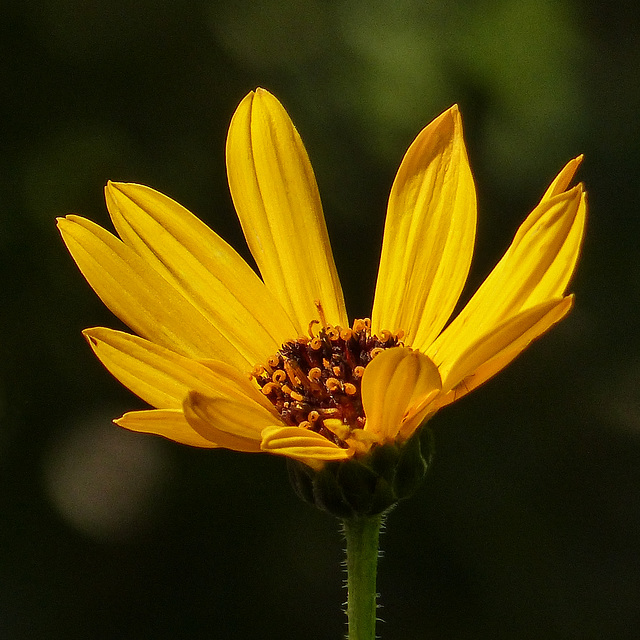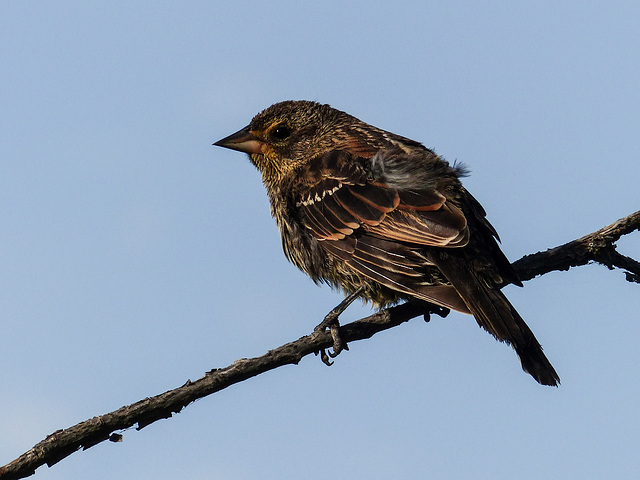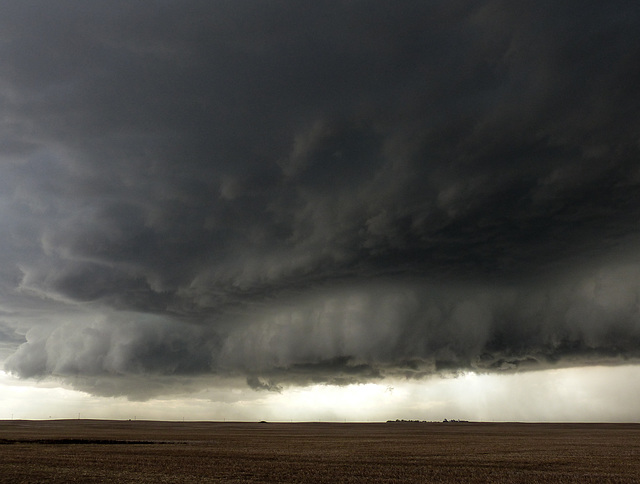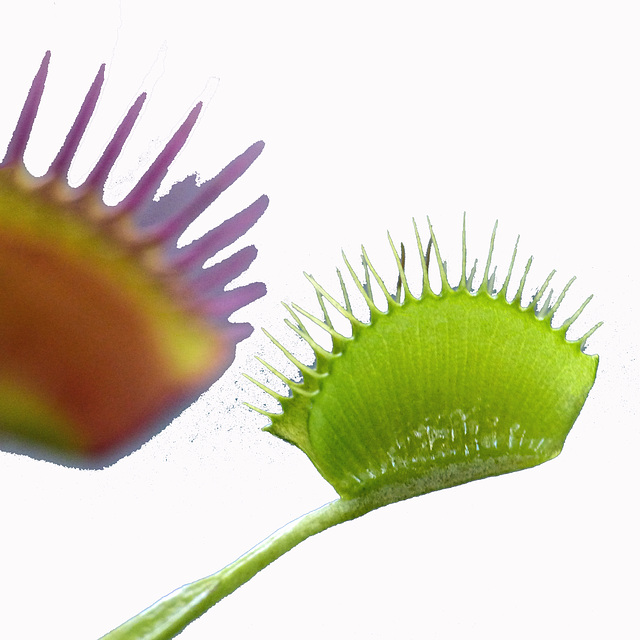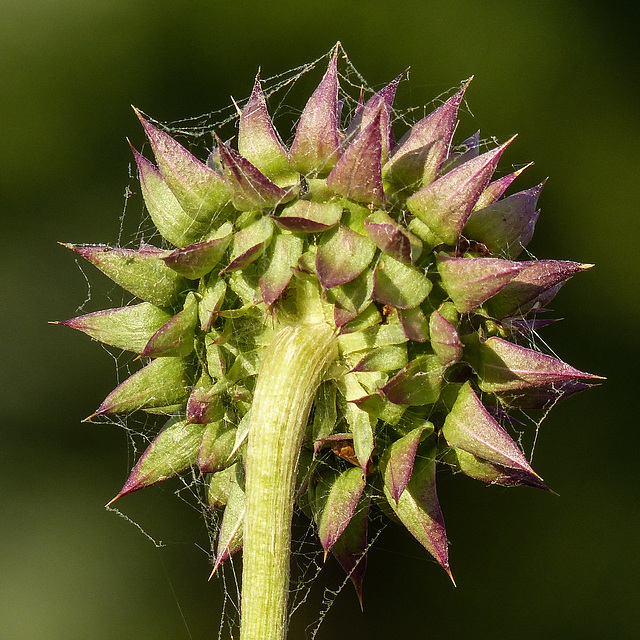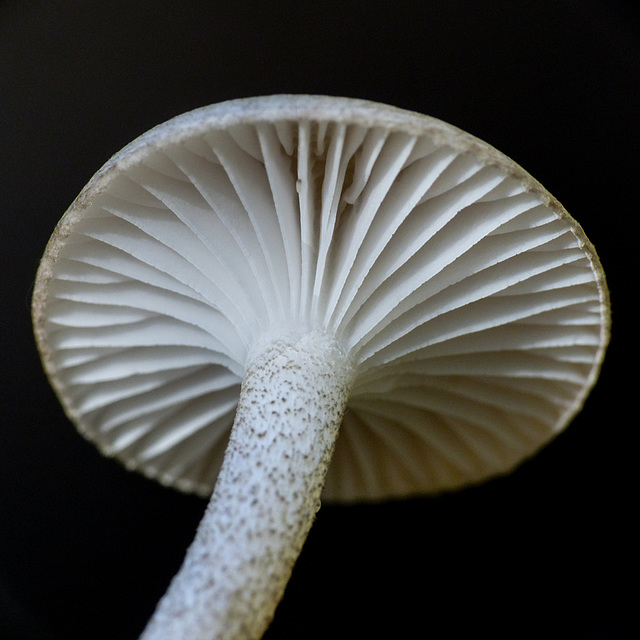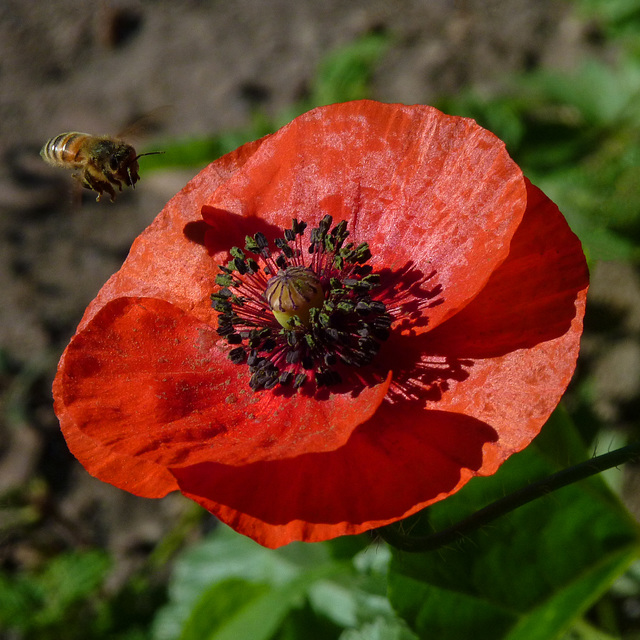
Explore, Flickr
27 Jul 2014
Jerusalem Artichoke
"The Jerusalem artichoke (Helianthus tuberosus), also called sunroot, sunchoke, earth apple or topinambour, is a species of sunflower native to eastern North America, and found from eastern Canada and Maine west to North Dakota, and south to northern Florida and Texas. It is also cultivated widely across the temperate zone for its tuber, which is used as a root vegetable. The tubers are elongated and uneven, typically 7.5–10 cm (3.0–3.9 in) long and 3–5 cm (1.2–2.0 in) thick, and vaguely resembling ginger root in appearance, with a crisp texture when raw. They vary in colour from pale brown to white, red, or purple. Despite its name, the Jerusalem artichoke has no relation to Jerusalem, and it is not a type of artichoke, though both are members of the daisy family." From Wikipedia.
en.wikipedia.org/wiki/Jerusalem_artichoke
This photo was taken in a friend's garden on 27 July 2014, growing next to beautiful Showy Milkweed.
19 Aug 2014
1 favorite
A change from Marmots
11 September 2014
A day to remember the horrific events of 11 September 2001. So many mental images that will never, ever leave our minds and hearts. People from so many different countries, not just the US. So many stories of loss and heartbreak - and so many stories of bravery and heroic actions. Remembering .... all those who lost their lives on that fateful day: all those who lost loved ones and close friends or fellow workers; all those who rushed in to "do their job" or "to help others" in any way they could. Remembering .... all those who were severely injured on that fateful day and who have bravely suffered every day since then; all those Firemen, Emergency Medical people, Police - men and women, who have suffered and continue to suffer emotionally and physically, including illnesses caused by being exposed to harmful chemicals. The list goes on and on. Remembering ... and praying that we never see another day like 11 September 2001.
On 19 August 2014, I was lucky enough to have the chance to try and photograph a couple of these absolutely adorable little creatures : ) After a while, I was beginning to despair of ever getting any decent shots at all. These tiny Pikas, also known as Rock Rabbits, hardly ever remain still and they are extremely fast! Imagine a mountain hillside covered in sharp, jagged rocks of all sizes and then try to picture how difficult it is to find in the viewfinder the single rock on which one of these Pikas might happen to sit for a second or two, lol! As time passed, I managed to take quite a few photos, though many needed to be deleted. Hope you don't get tired of seeing these little guys, but they are just so very cute. A couple of times, this Pika came bounding over the rocks near to where we were standing and just sat there, long enough to get a few very close shots. They are about 15 to 23 centimetres (5.9 to 9.1 in) in body length, so really are pretty small.
en.wikipedia.org/wiki/Pika
I've just found this excellent and amusing YouTube video, 3:30 minutes long, It is The American Pika in the BBC's Life of Mammals series.
youtu.be/Sifk9uphr2Q
The weather forecast was not good for that day, but we were so lucky that, apart from a few raindrops, the rain stayed away. The sun actually came out at two locations we stopped at for a short while. Our 18-hour day (from 6;00 a.m. till midnight!) started off with the thrill of seeing these Pikas and ended with a brief sighting of a black Wolf (could it be Skoki?) crossing the road ahead of us in the dark. It disappeared into the blackness, but shortly afterwards, we heard three (possibly four) separate Wolves howling way off in the distance. We just stood there, in total awe, listening to this amazing sound. The only wild Wolf I had ever seen before was when I was in Yellowstone National Park two years ago. Friends and I saw two Wolves feeding on a Bison carcass across a huge valley - so they were just distant specks, that became larger specks when my camera was in full zoom, ha.
In between these two highlights, we saw several Deer, a small group of Mountain Sheep on the road, a tiny Chipmunk, a few Cedar Waxwings, Columbian Ground Squirrels, a beautiful Red-tailed Hawk that sat on a branch out in the open for a long time, and two tiny Bats that flew very close over our heads when it was getting dark. We also saw an adult Grouse (Spruce Grouse?) with two young ones.
Then, of course, there is the scenery! Blue sky to go with the splendour of the mountains would have been wonderful, but we had been having cold and gloomy weather for a while before this day out. Highway 40 and the Smith-Dorrien/Spray Lakes Trail both run through such spectacular scenery, so it was a real treat for me, especially as I won't drive to those areas myself.
28 Aug 2014
Juvenile Red-winged Blackbird
Photographed this small bird on 28 August 2014, in southern Alberta, quite a distance east of Waterton Lakes National Park. It was hanging out at a campground with a number of Brewer's Blackbirds in a patch of small trees/shrubs right next to a river, but I can't remember if we saw any adult Red-winged Blackbirds or not. If anyone can either confirm or correct the ID, I would really appreciate it - thanks!
28 Aug 2014
Menacing
From 26 to 28 August, I was lucky enough to go with friends Cathy and Terry down to Waterton Lakes National Park and then further east on the third day. Fantastic scenery, 4 Black Bears (including one that was swimming in the lake), Bison, Deer, Golden-mantled Ground Squirrels, Chipmunks, various bird species including Burrowing Owls and a family of Dusky Grouse, a few wildflowers, several Yellow-bellied Marmots (a first for me!), and a few different insect species. I even got the chance to see three or four new-to-me old, wooden grain elevators.
The weather forecast that I saw before we left Calgary said that we were in for three beautiful days of sunshine. So, luck was on our side, giving us warm, sunny days - until the BIG STORM hit! We had driven eastwards from the park, hoping to see Yellow-bellied Marmots and, if we were really lucky, a Burrowing Owl. The storm was approaching very fast, around 5:00 p.m. just before we started our return trip to Calgary. It was like nothing I had ever seen before - a menacing cloud that was travelling fast and furious. This photo was taken one minute after the photo in a comment box below. Despite trying our best to get away from it, it eventually engulfed our car, surrounding us with more or less zero visibility, pounding hail, thunder and lightning, and tremendously strong winds. There was nothing to do but stop the car and sit tight, hoping that the hail would not break the car windows and that this severe thunderstorm would not develop into a tornado! This storm was very scary, but at the same time, exciting (only because all turned out OK in the end!). Fortunately, we weren't caught in the very centre of it. Our road trip sure went out with a bang! Later, I contacted the Alberta Tornado Watch and posted a photo for them to see. They said the storm that happened that day was a mesocyclone.
29 Jul 2014
1 favorite
Almost like art
I came across this photo last night, when I was trying to find a photo that had some bright colour in it. I cropped it, but found the darkish grey-blue background so unpleasant. Normally, I don't change backgrounds, and with the couple of photos that I have done so, I always say what I have done. Took me forever to remember how to do it, too. Anyway, this image shows two different leaf-tip colourings that were on a Venus Flytrap plant, taken on 29 July 2014. The tips were maybe half to three-quarters of an inch.
"The Venus Flytrap, Dionaea muscipula, is a carnivorous plant that catches and digests animal prey—mostly insects and arachnids. Its trapping structure is formed by the terminal portion of each of the plant's leaves and is triggered by tiny hairs on their inner surfaces. When an insect or spider crawling along the leaves contacts a hair, the trap closes if a different hair is contacted within twenty seconds of the first strike. The requirement of redundant triggering in this mechanism serves as a safeguard against a waste of energy in trapping objects with no nutritional value."
en.wikipedia.org/wiki/Venus_Flytrap
David Attenborough looks at how this well known carnivorous plant captures its prey. This short video is from the BBC.
www.youtube.com/watch?v=ktIGVtKdgwo
Yesterday was sunny with blue sky, which was so welcome after the very damaging summer snowstorm that hit Calgary hard the previous two days. I haven't driven anywhere since before the storm, so still haven't seen "the big picture". Just on my street yesterday, city crews were out on foot, marking the trees that needed branches removed. Now the edge of the street is lined with endless piles of cut branches, waiting for the trucks and equipment to come and deal with them. And that's just a tiny section of my street - makes you realize how many thousands of trees were damaged across the whole city. Not sure what happened to the sun today, as the sky is very overcast. It's supposed to return tomorrow, though. Later: it rained this afternoon, which helped get rid of more of the snow, but I suspect that down in our parks and natural areas there will be still be snow and slush. The weekend is looking good so far : )
28 Aug 2014
Young Burrowing Owl
There are 38 images in my Burrowing Owl album, but this photo shows one of the two first and only Burrowing Owls that I have ever been fortunate enough to see in the wild. To say that it was a thrill is an understatement! These endangered owls are tiny and so difficult to see, especially when they are down in the grasses, or in this case, against the stubble in the field. They are a true delight when, or if, they are seen on a fence post, so that the whole of the bird can be seen, not just a pair of bright yellow eyes peering out between the blades of grass. We saw two different individuals, possibly three, one of them this juvenile. Most of the time, though, they were mainly hidden in the grass, so most of my photos tend to be of "eyes". Such a great pity that this is an endangered species!
"As a result of its ENDANGERED Species status in 1995, the Burrowing Owl has the focus of a variety of conservation efforts. Operation Burrowing Owl and other projects involving habitat preservation with landowners have been created. Populations are monitored by Fish and Wildlife departments. They have been reintroduced into the British Columbia interior, where it was extirpated. Outlook would improve if larger areas of habitat were preserved and harmful pesticides were banned in all areas of their range. Numbers could increase if an increased tolerance to burrowing mammals develops (i.e. badgers) – provides homes for the Burrowing Owl. Outlook: perilous." From burrowingowl.com.
en.wikipedia.org/wiki/Burrowing_owl
During three days away (26, 27 and 28 August 2014) with friends Cathy and Terry, we saw so many things, including breathtaking scenery, 4 Black Bears (including one that was swimming in the lake), Bison, Deer (including several that we saw in the town of Waterton, where we stayed for two nights at the clean and friendly Bear Mountain Motel), Golden-mantled Ground Squirrels, Chipmunks, various bird species including these endangered Burrowing Owls (way east of Waterton, on our last day), a few wildflowers, several Yellow-bellied Marmots (a first for me!), a few different insect species, and a family of Dusky Grouse that are uncommon in the park. I even got the chance to see three or four new-to-me old, wooden grain elevators. Oh, and we got caught in a storm like nothing we'd ever seen before - a mesocyclone, apparently.
23 Jul 2014
The fancy web work of a spider
Perhaps I should whisper that this is my favourite Thistle, seeing as it is a weed : ) It is called Nodding Thistle, also Musk Thistle, and was introduced from Europe and North Africa. A member of the Aster family, it grows to 60-250 cm tall, with flower heads that are 1.5-8 cm across. This particular plant was growing on 23rd July 2014 at the Erlton/Roxboro Natural Area. It was past its prime, as the purple disc florets have died, but I am always fascinated with the spine-tipped, inner and outer bracts. This time that I went, the sun was in the wrong position to try and photograph the plants from the other side.
After a volunteer shift on that day, 23 July 2014, I wasn't too far away from the Erlton/Roxboro Natural Area, where I was finally going to go on a botany walk. Having been to this location several times before, I knew it was a short, easy, flat trail, and that I could go as far as I wanted and then turn back early, which is what I did. I've missed pretty well all the botany and birding walks the last few months, which is quite depressing. The main thing I wanted to see were these Nodding / Musk Thistles.
With a couple of hours to "kill" after my volunteer shift, I spent them at the Reader Rock Garden, which was just a few minutes' drive away from the evening botany walk at the Erlton/Roxboro Natural Area.
06 Sep 2014
1 comment
Just a little mushroom
With a weather forecast of rain and snow for the following two or three days, there were a couple of places that I thought I had better get to on Saturday, 6 September 2014. (Little did we all know that we were in for two days of heavy snowfall that has caused a huge amount of damage to thousands of trees and shrubs throughout the city.) The first place I wanted to get to was Brown-Lowery, to check if there were any mushrooms. I was there recently, and only found a couple of things.
On 6 September, it was a little more rewarding and I found several large clusters of tiny mushrooms growing on tree stumps or at the base of trees and various tiny mushrooms growing in the moss, including the small, white one in the macro shot above. Also found several patches of bright orange Coral Fungi. Quite a few people were in the park, so I felt safer going a very short way in. Far enough, as it turned out, to watch an adult and a juvenile Three-toed Woodpecker, feeding together on a tree trunk. The young one was copying Mom or Dad, but its soft squeaking sound resulted in the adult feeding it, too. This Woodpecker species seems to be reasonably tolerant of people. They are rare birds here, so I feel very lucky to have seen these two and any others in the past.
On the way home, I decided to call in at Fish Creek Park, hoping to find a Beaver or a Mink that a friend had told me about (thanks, Phil!). Though I did see a couple of Beavers, I wasn't able to get a decent photo of them. One of them was a huge animal - this was the one that was very recently found in a trap, biting off one of its front legs that was caught in the trap. Someone had been there when this was happening and she made several reports about it. Thanks, Linda, for doing this. Such a cruel way to deal with any Beaver problem! The now three-legged animal seems to be doing OK. I was luckier with the Mink, catching it in a couple of quick shots.
On the walk back to my car, I was lucky enough to see a distant doe and two fawns. Apparently, she had three young ones, so we were wondering if something had happened to one of them. Maybe a Coyote?
27 Aug 2010
Coming in to land
Posted mainly for a splash of bright colour, which I'm needing at the moment : ) Our weather has calmed down after our two days of severe snowstorm a few days ago. Yesterday, 13 September 2014, I finally got out for a drive. I hadn't been out of the house for a few days and was beginning to get cabin fever. Driving down my street, I finally got a look at just how much tree damage the late summer snowstorm (actually two storms, on 9 and 10 September) had caused. My street is lined with huge piles of cut-down branches, waiting for the city's machines to come and remove them.
My drive took me as far as Brown-Lowery Provincial Park, SW of the city, as I wanted to see how much snow was on the ground in the forest. From the muddy parking lot, I could see that the ground between the trees was covered with a lot of snow, hiding everything that might have been there, including wildflowers and mushrooms. It will take some time for all this sheltered snow cover to melt. I saw practically nothing during my drive, other than a Magpie, the Red-tailed Hawk that I'm posting today, horses and cows. Looks like we may have to wait till spring arrives next year before getting the chance to photograph much, if anything, other than snow photos. Many parks and natural areas are now closed because of the damage caused by the snowstorms. It's feeling rather like the situation last summer, when everywhere was closed for months because of the damage caused by the Alberta Flood of the Century.
This Poppy photo was taken way back on 27 August 2010, during a visit to the wonderful homestead and gardens belonging to the late Jim Coutts, near Nanton, Alberta. I used to look forward so much to our occasional visit, especially seeing Jim's beautiful Poppy gardens. Interesting to note that Jim used to be the former principal secretary of Prime Minister Pierre Trudeau.
Jump to top
RSS feed- Latest items - Subscribe to the latest items added to this album
- ipernity © 2007-2024
- Help & Contact
|
Club news
|
About ipernity
|
History |
ipernity Club & Prices |
Guide of good conduct
Donate | Group guidelines | Privacy policy | Terms of use | Statutes | In memoria -
Facebook
Twitter

